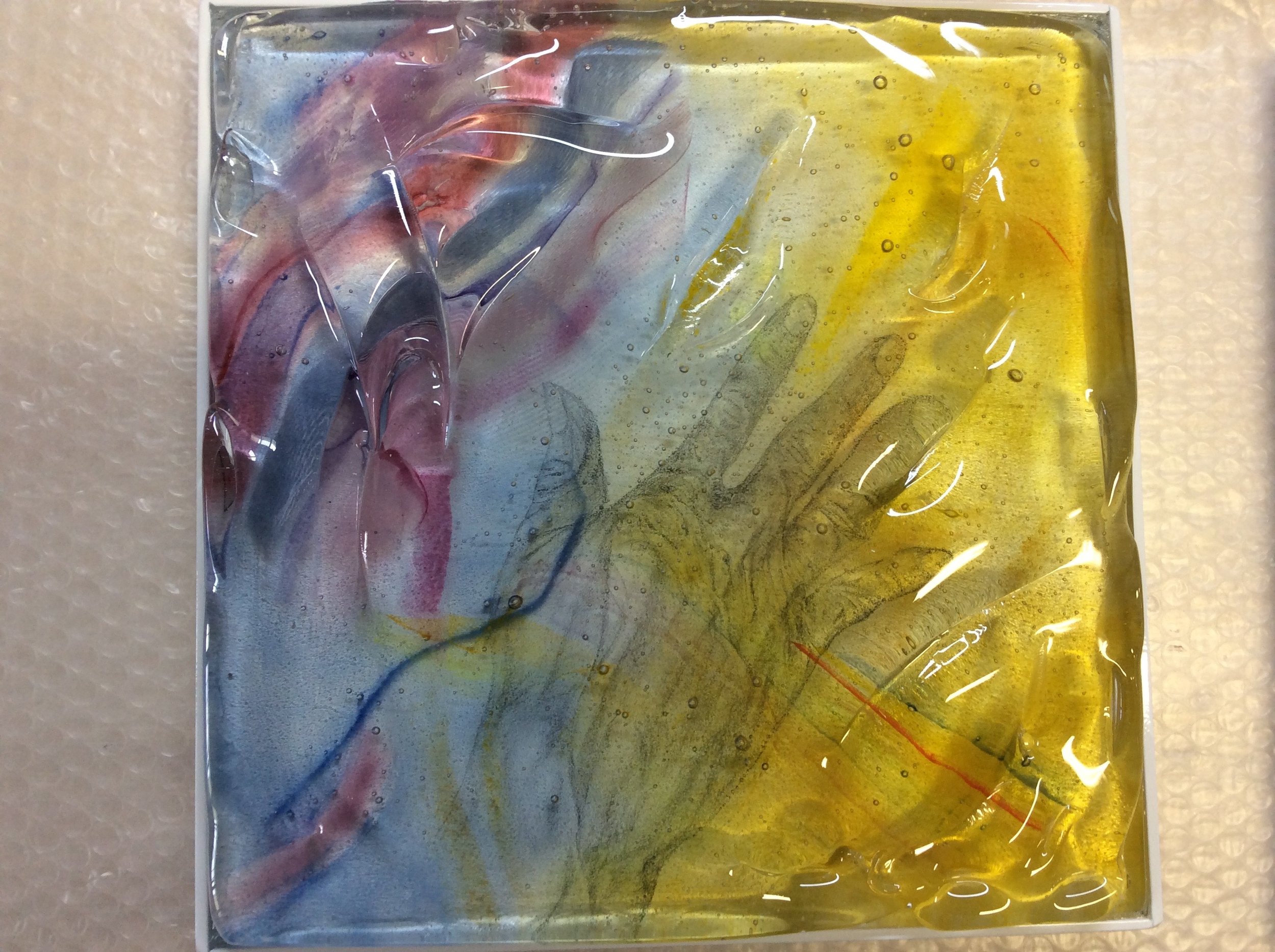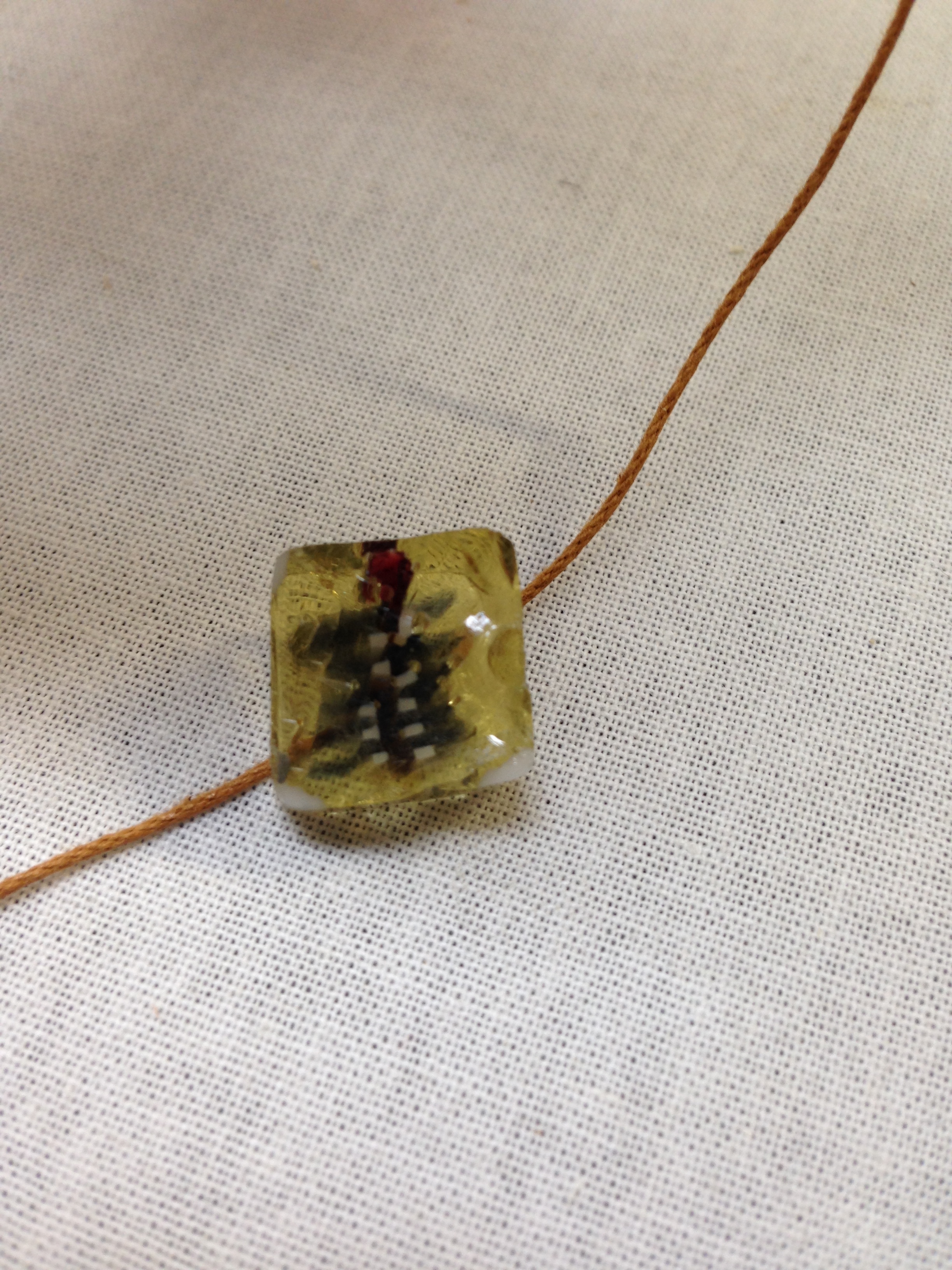Ranica-Bergamo Cultural Centre ”Roberto Gritti” February 2010
In the beginning of the 1900′s, many children in Europe quit playing early on to go work in the textile factories. Still today, many children in the world are destined to interrupt their age to play in favour of work and exploitation. With her experience in Hot casting, Nives has imprinted in the glass the highly expressive signs of an exploited youth, thereby giving a voice to an all-too current topic.
This sculpture reproduces and reinterprets the WORLD game (hopscotch), which we all know and have played in all continents since ancient times. From then until now, it has covered all the roads of the planet, and its form can be found, drawn with chalk or sticks, wherever children live. Its deeper and initiatory meaning has brought me to reflect on the condition of childhood from the early 1900's on As we have all played this game at least once in our childhoods, we know that one jumps from square to square, balancing oneself on one leg. I've interpreted this as a symbol of a childhood that is precarious, balancing itself between hunger and fieldwork, between the promise of a better future ahead and the effects of increasing industrialisation. The youngest workers of the Gioachino Zopfi spinning and weaving factory, in Ranica, Italy, in the early 1900's, had to suspend their playing at a very early age. These children's already precarious health was threatened by dangerous and hard work, in unhealthy conditions. In this work, I imagine a 10 year old boy who throws his stone in square 3 and starts on his way. One of the rules of this game is that if you lose your balance or you step on a line, as he did in squares 4 and 6, you have to start over. For him, this meant jumping from childhood to the world of work. I found the healds that I put in front of square 6 in the storerooms of the modern-day weaving in Ranica. They were used by the the Zopfi workers until 1983 in learning how to use the weaving mills. The price of the material is on square 8, reminding us that the workers (children included), worked up to 14 hours a day. Children were often victims of accidents of varying degrees (as can be read in the square with a document from the Ranica Archive with the company stamp -Gioachino Zopfi- factory in Bergamo, August, 1899- “Michele Piazzoli, 12 years of age, spinning worker for Giò Zopfi in Ranica, accidentally suffered from a wound in the sole of this left foot on the 9th of August. The wound will require about 10 days to heal. For Dr. Gandolfi… undersigned”). Although this reality seems a distant memory to us now, in many countries of the world children are still forced by adults, or by necessity, to SUSPEND GAMES. The continents are depicted in square 9: the more intensely coloured areas represent the still high percentage of child labour. The blood-red footprint and the shape of the game as I have depicted it recall the cross and represent a childhood and carefree spirit that have been suppressed and mortified. In the last square, one can just see, or think they see a word…..CIELO (sky)…. It is the symbol of a sky and of a serenity that are barely legible in the destinies of many children in the WORLD. Still today, many of them are not allowed to reach, jump by jump, struggle by struggle, the square we all aspire to reach from birth: a serene and reachable SKY.

























